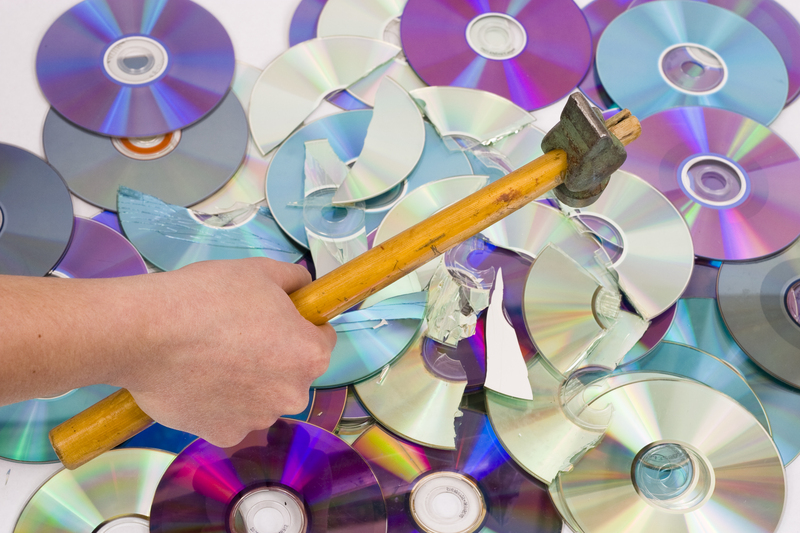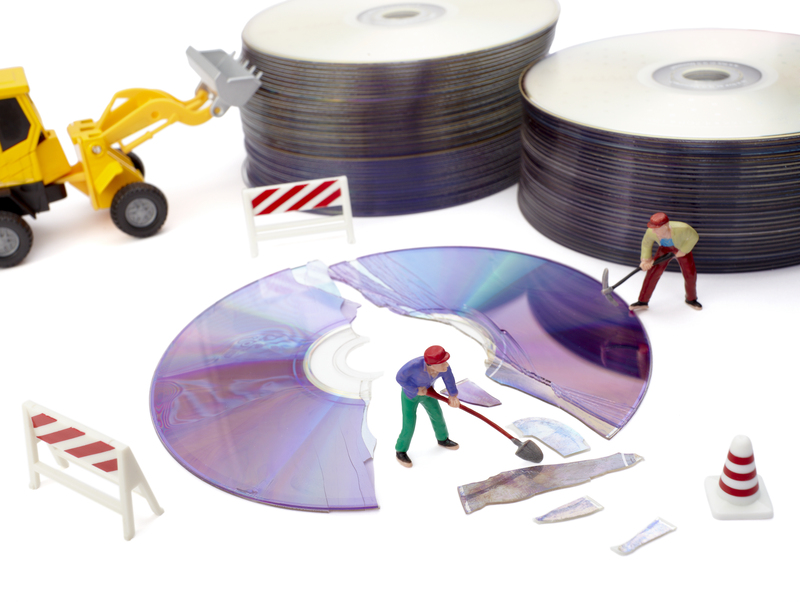Consumer Trends Shaping Packaging and Cardboard Disposal Solutions
The rapid dynamism of consumer preferences is fundamentally transforming the packaging industry and its related cardboard disposal solutions. Consumer trends in packaging are now redefining business strategies, encouraging innovation, and propelling companies toward more sustainable and environmentally-friendly practices. In this comprehensive article, we delve into the main forces dictating packaging designs, material selection, and the evolution of cardboard disposal processes, providing a clear view of how modern consumers are reshaping the industry.

Understanding the Modern Consumer's Role in Packaging Evolution
The modern consumer is more informed, discerning, and environmentally conscious than ever before. Key changes in their behaviors are influencing how companies approach the design and disposal of packaging--especially cardboard. Consumer-driven packaging trends do not merely reflect preferences; they signal a broader societal shift towards prioritizing sustainability, convenience, and brand transparency.
Key Drivers Behind the Demand for Better Cardboard Disposal Solutions
- Eco-consciousness: A growing number of consumers factor environmental impact into their purchasing decisions. As a result, there's increasing demand for packaging that is recyclable, biodegradable, and easy to dispose of responsibly.
- Convenience: Consumers seek efficient ways to dispose of packaging materials, prompting businesses to design cardboard packaging that easily fits into existing recycling systems.
- Legislation: Worldwide regulations are pressuring industries to adopt eco-friendly packaging materials, further spurred by consumer advocacy and preference.
- Brand Authenticity: People gravitate toward brands that demonstrate authentic concern for the planet, often through their commitment to circular packaging solutions.
These driving forces suggest that the path to business success now goes hand-in-hand with offering sustainable packaging and effective cardboard disposal.
Emerging Consumer Trends in Packaging
The Rise of Sustainable Packaging Materials
Today's consumers are vocal proponents of products that use eco-friendly and sustainable packaging materials. As a direct response, brands are rapidly transitioning from single-use plastics to alternative options--most notably, cardboard made from recycled content or responsibly-sourced fibers.
- Recycled Content: The preference for packaging with a high percentage of post-consumer recycled (PCR) content is a strong trend.
- Minimalistic Designs: Excessive packaging is being replaced with minimalist cardboard designs that use less material and are easier to recycle.
- Compostable Options: Packaging that is both compostable and biodegradable is increasingly desirable because it lessens landfill waste.
Cardboard for packaging is celebrated for its recyclability and sturdiness. These qualities, combined with improved disposal solutions, have cemented cardboard's place as the material of choice in several industries.
The Importance of Packaging Design in Disposal Solutions
Packaging design is intricately linked to how easily materials can be disposed of and recycled. Cardboard packaging that utilizes simplified structures, fewer mixed materials, and clear recycling instructions is much more likely to be properly disposed of by consumers.
- Clear Labelling: Informative labels guide consumers on how to recycle or dispose of packaging responsibly, improving recycling rates.
- Easy Disassembly: Packaging engineered for quick disassembly ensures that cardboard and other materials are less likely to end up in the wrong waste stream.
- Mono-material Construction: Packages made primarily from cardboard simplify the recycling process, avoiding the complexity associated with material separation.
Innovative Cardboard Disposal Solutions: Meeting Consumer Expectations
Advancements in Cardboard Recycling Processes
As consumers demand better ways to handle packaging waste, the recycling sector is pushing the envelope with advanced cardboard disposal solutions. New technologies maximize cardboard recovery rates and minimize contamination, making recycling more efficient and widely accessible.
- Smart Recycling Bins: Many cities now deploy bins equipped with sensors to monitor cardboard waste levels and optimize pickup schedules.
- Automated Sorting Facilities: Modern recycling centers employ AI-driven machinery to accurately sort cardboard from mixed-waste streams, enhancing purity and quality.
- Closed-loop Recycling Systems: Brands are investing in closed-loop arrangements, where used cardboard is collected and remanufactured into new packaging, reducing the need for virgin materials.
The ultimate goal is to create a circular economy, where cardboard disposal leads to the continual regeneration of packaging materials.
Consumer Education: A Pillar of Successful Cardboard Disposal
No matter how efficient recycling solutions become, consumer participation remains essential. Comprehensive education campaigns by both local governments and businesses are necessary to increase awareness and engagement in responsible disposal practices.
- Clear Communication: Simple guides, digital apps, and clear pictorials encourage proper separation of cardboard from contaminated waste.
- Incentive Programs: Reward-based systems, such as rebates or discounts for returning packaging, encourage consumers to adopt proper cardboard recycling habits.
Understanding what can and cannot be recycled is key to improving the overall effectiveness of cardboard disposal solutions.
How E-commerce Is Influencing Packaging and Disposal Trends
The explosive growth of e-commerce has introduced new challenges and opportunities regarding packaging and cardboard disposal. Online retailers must balance the need for durable, protective packaging with the growing demand for sustainability.
- Smarter Box Sizing: Automated packaging algorithms help minimize empty space inside shipping boxes, reducing total cardboard waste.
- Returnable Packaging: Some brands now offer reusable cardboard solutions designed for easy return and multiple usage cycles.
- Recycling Partnerships: Collaborations between e-commerce giants and local recycling authorities ensure that packaging is collected and processed efficiently.
The e-commerce sector has quickly become a significant stakeholder in the innovation and adoption of packaging and cardboard waste management practices.
Consumers Demand Transparency and Accountability
In a digitally-connected world, today's shoppers expect full transparency about the environmental impact of a product's packaging and its disposal process. This has prompted businesses to publicly share their sustainability goals and cardboard recycling rates.
- Lifecycle Assessments: Brands conduct and share lifecycle assessments to demonstrate the positive impact of improved cardboard packaging and disposal methods.
- Certifications: Labels such as FSC, Recycle Now, or EcoLabel signal responsible sourcing and end-of-life management, building consumer trust.
Accountability across the supply chain ensures businesses gain loyalty while reducing their ecological footprint.
The Role of Technological Innovation in Packaging and Disposal
Smart Packaging and Digital Solutions
Smart technologies have begun infiltrating the world of packaging and cardboard disposal. The advent of QR codes, smart barcodes, and RFID chips on product packaging now help track packaging origin, composition, and recommend optimized disposal routes.
- QR Codes: Enable consumers to access disposal instructions and recycling location maps directly from their smartphones.
- Connected Devices: Smart home waste systems automatically sort recyclables, including cardboard, reducing human error.
- Blockchain Tracking: Ensures authenticity of recycled material claims and reduces greenwashing risks.
These technological advances simplify the consumer's participation in sustainable waste management and enhance the integrity of cardboard disposal solutions.
Packaging Innovation: Lightweighting and Modular Solutions
Lightweight packaging is a direct response to consumers' call for less waste. Advances in engineering have enabled the creation of strong yet thin cardboard structures, reducing material usage while maintaining protective qualities.
- Modular Packaging Designs: Standardized sizes and shapes streamline the disposal and recycling of cardboard materials.
- Flexible Packaging: Hybrid solutions use a combination of cardboard and other lightweight materials to maximize recyclability and minimize waste.
The evolution toward lightweight and modular cardboard packaging not only meets consumer expectations but also reduces overhead costs for businesses.
Challenges in Adopting Sustainable Packaging and Disposal Solutions
While the movement toward sustainable packaging and improved disposal systems is gaining momentum, the industry still faces notable hurdles:
- Infrastructure Gaps: Not all regions have the recycling infrastructure necessary to process advanced cardboard packaging solutions.
- Cost Implications: Innovative materials and processes can incur higher initial costs, posing a challenge for price-sensitive businesses.
- Consumer Behavior: Despite increased awareness, some consumers are slow to adopt new cardboard recycling habits.
- Contamination: Cardboard contaminated with food or other materials often ends up in landfills, highlighting the need for consistent consumer education.
Overcoming these obstacles requires collaboration between businesses, governments, and consumers to ensure that sustainable packaging and effective cardboard disposal remain attainable and practical.

Future Outlook: Evolving Consumer Trends and the Path Ahead
Greater Personalization and Customization
Consumers increasingly expect packaging tailored to their unique needs and values. As personalization grows, so does the requirement for customized cardboard disposal solutions that address specific customer segments, such as apartment dwellers or businesses.
- On-demand Collection services for urban consumers often include specific sorting for cardboard waste.
- Subscription-based Recycling programs offer regular pickups for consumers and small businesses.
Localization of Recycling and Disposal
Companies are shifting toward local and regional recycling partnerships in an effort to reduce transportation emissions, support community initiatives, and ensure that cardboard disposal aligns with local capabilities and regulations. This trend strengthens the resilience of supply chains and enables faster adaptation to evolving consumer expectations.
Increased Use of Data and Analytics
The industry is also leveraging big data to track consumer habits, optimize recycling logistics, and predict future packaging design needs. These insights feed the continuous evolution of packaging and cardboard disposal best practices.
Conclusion: Consumers at the Core of Packaging and Cardboard Disposal Innovation
Consumer trends are the driving force behind the packaging industry's shift toward more innovative and sustainable practices. As modern shoppers champion environmental stewardship, convenience, and brand transparency, businesses must adapt their packaging choices and cardboard disposal solutions accordingly.
- Eco-friendly materials and recyclable cardboard packaging are no longer optional but expected.
- Smart technologies, design innovation, and personalized disposal options play a pivotal role in meeting rising consumer demands.
- Stakeholder collaboration and continued education remain vital for the effectiveness and scalability of new disposal solutions.
Ultimately, by placing the consumer at the center of packaging and disposal strategies, businesses not only achieve compliance and operational efficiency--they also build stronger, more lasting relationships with their customers and help protect the planet for generations to come.
Staying on top of these evolving consumer trends ensures that your approach to packaging and cardboard disposal remains robust, responsible, and ready for the future.
